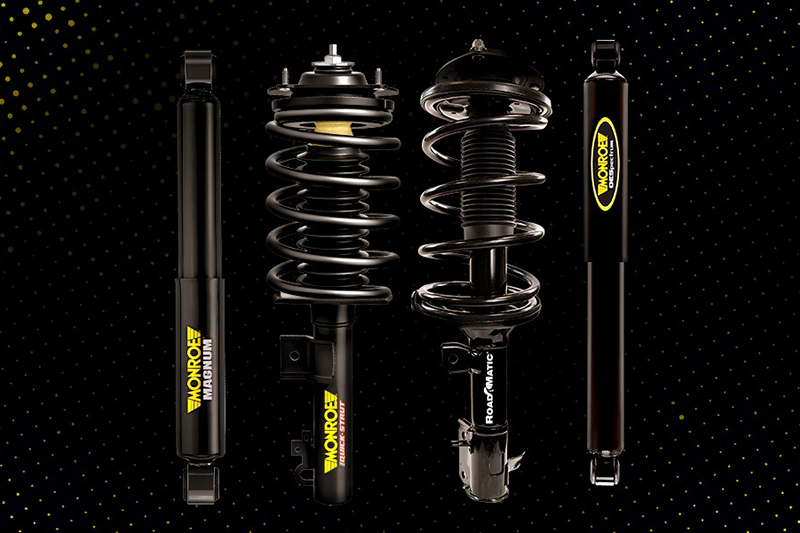
Monroe gives PMM readers some best practice advice to follow when it comes to replacing steering and suspension components.
Replace in pairs
Replacing just one shock or strut can:
- Make a vehicle more difficult to control
- Increase the distance needed to complete a safe stop
- Cause the vehicle to fail a safety inspection
- Accelerate tyre wear
- Shorten the service life of the new shock or strut
Shock absorbers and struts are vital safety components that directly affect braking distance, steering precision, stability and control. To help ensure safe suspension balance, handling and control, it is essential to replace shocks and struts in pairs – on both sides of the vehicle, front or back. Always change shocks and struts in pairs – it’s essential.
Help protect driving safety and vehicle investment by following these three essential repair practices:
- Always install a new protection kit with each new shock or strut
- Always install a new mounting kit with each new strut
- Always replace shocks and struts in pairs
Frequency
Monroe recommends shock servicing every 12,500 miles and replacement every 50,000 miles. Shock absorbers and struts contribute to a vehicle’s steering and handling precision by maintaining tyre-to road contact, reducing steering wander and controlling suspension movement in key situations. They help reduce stopping distance, including in braking emergencies, by keeping your tyres in contacts with the driving surface and preventing excessive weight transfer to the front wheels (brake dive).
Together with protection and mounting kits, shocks and struts help keep your vehicle upright, stable and in its lane in turns, on roundabouts and in sudden emergency manoeuvres by limiting weight transfer, body roll and lean and contributing to tyre grip.
Shocks and struts help provide the unique handling and comfort that led you to purchase your vehicle. These characteristics can slowly disappear as your shocks and struts lose their damping effectiveness.
The benefits of regular shock and strut servicing:
Safer steering
New shocks, struts, mounting kits and protection kits can help restore like-new steering precision and control in virtually any passenger vehicle.
Improved stopping
New shocks and struts can help improve the effectiveness of brakes and tyres in a full range of stopping situations.
Greater stability
New shocks & struts can help keep vehicles more firmly planted on the driving surface and in its lane while cornering.
Safer, more enjoyable ride
Shocks and strut replacement can make it easier to control a vehicle, increase comfort and make it fun to drive again.
The risks of poorly serviced shocks and struts:
Steering accuracy
Worn shocks and struts can make your car more difficult to control in certain situations by increasing steering wander and reducing tyre-to-road contact.
Stopping distance
A vehicle equipped with shocks or struts that are 50% worn, traveling at 50 mph, will need an extra 2.6 meters of stopping distance than the same vehicle equipped with new shocks/struts.
Vehicle stability
A vehicle equipped with shocks/struts that are 50% worn, traveling at 37 mph around a 40° turn, can lose stability and go off course 4 mph sooner than the same vehicle with new shocks/struts.
Tyre life
The presence of a worn shock absorber or strut can increase wear of the corresponding tyre by more than 7%.









